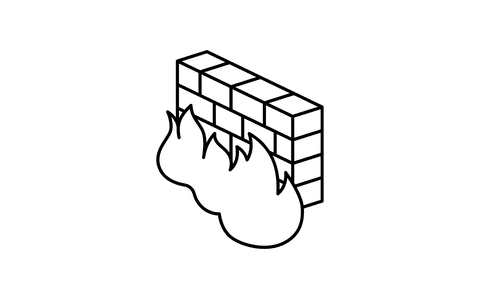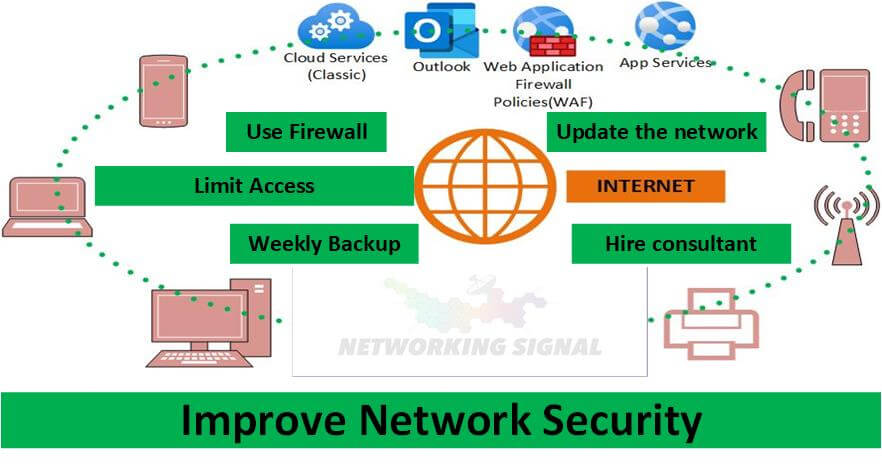11 Ways to Improve Network Security
- Keep your network up to date
- Use strong passwords and authentication
- encrypt your data
- limit access to your network
- use a firewall
- monitor activity on your network
- educate users on security risks
- disable unnecessary services and protocols
- physically secure your network
- perform regular backups
- hire a professional security consultant
Keeping your network up to date is one of the most important things you can do to improve security. Every time a new vulnerability is discovered, there is a potential for attackers to exploit it. By patching your systems and software as soon as new updates are available, you can help mitigate the risk.
Using strong passwords and authentication methods is another key way to improve security. Passwords should be long, complex, and unique. Avoid using easily guessed words or personal information. Two-factor authentication (2FA) adds an extra layer of security by requiring users to provide a second form of verification, such as a code generated by a mobile app, in addition to their password.
Encrypting your data is another important step in securing your network. Encryption helps to protect information from being accessed by unauthorized individuals. When data is encrypted, it is converted into a code that can only be decrypted by someone with the proper key.
Limiting access to your network can also help to improve security. By restricting who can access your network, you can help to prevent unauthorized individuals from gaining access. This can be done by using physical security measures, such as locks and keys, or by using logical security measures, such as passwords and authentication.
Using a firewall is another way to improve security. A firewall can help to block unauthorized access to your network and can also help to monitor and control traffic.

Monitoring activity on your network is another good way to find and fix security problems. By keeping an eye on what is happening on your network, you can spot potential issues and take steps to resolve them.
Educating users on security risks is another key way to improve security. Users should be aware of the dangers of clicking on links in email messages, downloading attachments from unknown sources, and visiting websites that may be malicious. They should also know how to spot signs of a phishing attack and what to do if they suspect their computer has been infected with malware.
Disabling unnecessary services and protocols can also help to improve security. By disabling unneeded services, you can reduce the attack surface of your network. Additionally, by disabling unneeded protocols, you can help to prevent attackers from gaining access to your network.
Physically securing your network is another important step in improving security. This includes measures such as keeping servers in a secure location, using physical security devices such as locks and keys, and using surveillance systems.
Performing regular backups is also crucial for security. Backups help to ensure that you can recover your data in the event of a disaster. They also help to ensure that you can restore your system to a previous state if it is compromised.
Hiring a professional security consultant can be an effective way to improve security. A security consultant can help to assess your current security posture and make recommendations for improvements. They can also help to implement security controls and monitor your network for signs of intrusion.

How can data gained from intrusion detection improve network security?
Intrusion detection systems (IDS) are designed to detect and respond to malicious activity on a network. By monitoring activity on a network, IDS can help to identify potential security threats. Additionally, by analyzing data gathered from IDS, organizations can improve their network security posture.
Data gained from intrusion detection can be used in a number of ways to improve security.
- For example, data from IDS can be used to identify trends in malicious activity. This information can then be used to develop better security controls.
How does the network address translation nat improve security?
Network address translation (NAT) is a process of mapping one IP address to another. NAT can be used to improve security by hiding the true IP addresses of devices on a network. By using NAT, organizations can make it more difficult for attackers to identify and target specific devices. Additionally, NAT can help to reduce the risk of IP address spoofing.
How does a DMZ improve network security?
A DMZ is a network that sits between a trusted network and an untrusted network. DMZs improve security by allowing organizations to segregate their networks. By placing servers and other critical assets in a DMZ, organizations can make it more difficult for attackers to reach these assets. Additionally, DMZs can help to contain the spread of malware and other malicious activity.

